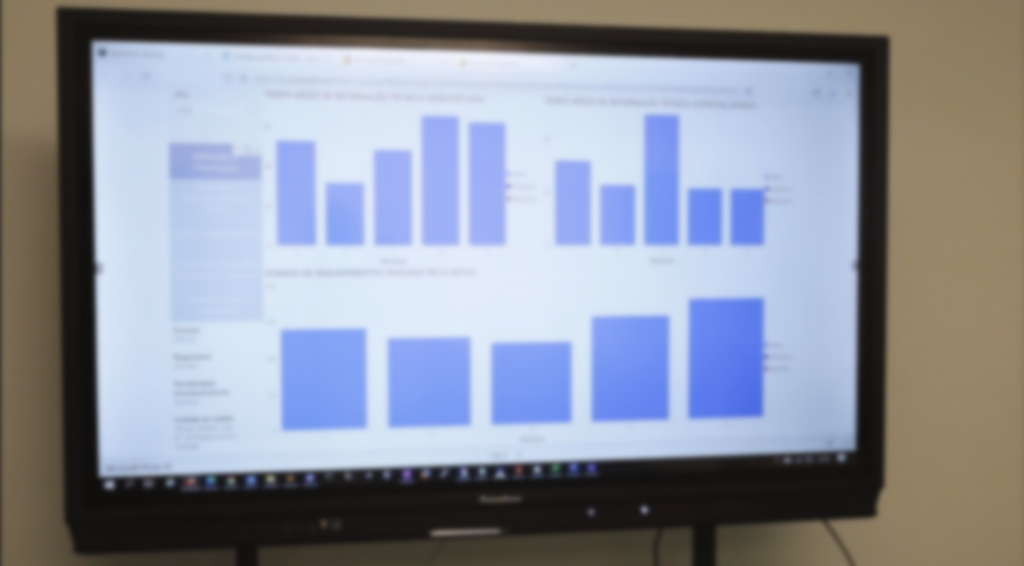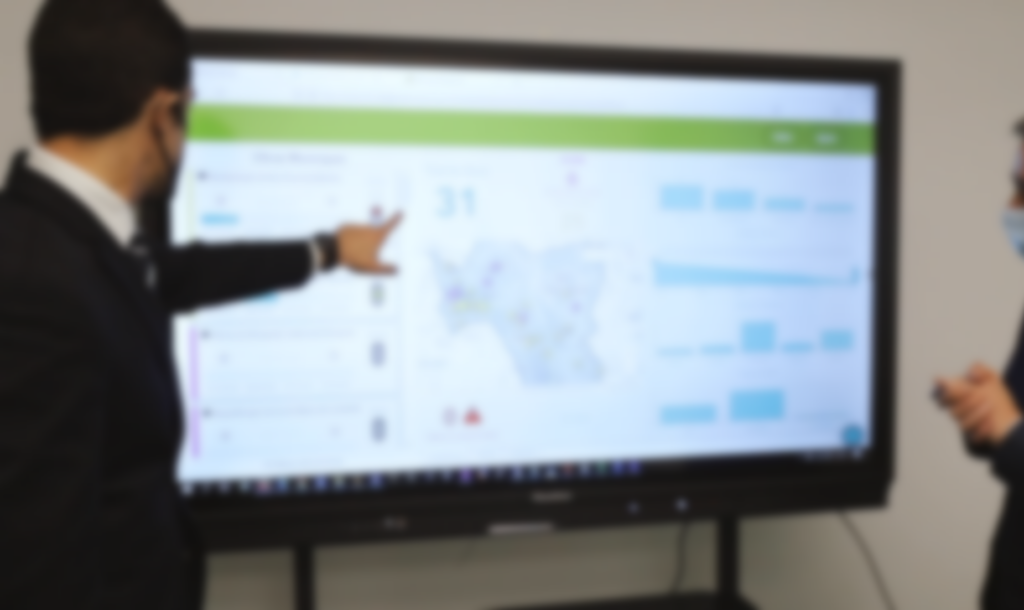The Company
In today’s fast-paced governance and business world, this city hall distinguishes itself as a forward-thinking organization. It has adopted digital transformation as a key driver for regional growth and modernization of society. Acknowledging the vital importance of digitalization in driving regional transformation, our city government is dedicated to fostering a digital environment. This commitment aims to boost job creation, help local businesses expand internationally, and implement an advanced model of governance.
The town hall’s policy, rooted in a holistic approach, emphasizes the importance of acting in three fundamental dimensions: citizens, businesses, and government entities. This comprehensive strategy aims to equip all stakeholders with the necessary tools and conditions to face the challenges of a rapidly evolving digital world.
Since 2017, this city hall has fully embraced digitalization, reflecting its commitment to a progressive vision. The approach adopted in this journey was adopting new technologies and a fundamental redefinition of existing processes. This structural change, grounded in in-depth analysis, allowed the city hall to optimize operations, increase productivity, and offer more effective services to its citizens and businesses.
In this case study, we delve into the transformative journey of this city hall, exploring how digitalization reshaped its structure, the challenges encountered, and the successes achieved in building a modern, interconnected, and resilient community.
The challenge
By keeping pace with the advancements in the digital age, the city hall has acknowledged the pivotal role of digital transformation in reshaping both administrative and social processes. This transformation is not just a technological upgrade but a strategy directed at improving job quality, increasing the international presence of local businesses, and advancing the State’s and society’s modernization. The holistic approach focuses on empowering individuals, businesses, and governmental entities to adapt and thrive in the digital age.
Since transitioning to digitalization in 2017, this local authority has pioneered its operational methodologies. This change involves adopting digital tools and a comprehensive review and improvement of existing processes based on detailed analysis, aiming to make municipal operations more efficient and responsive to citizen needs.
Project Team Composition
The Information Technology, Telecommunications, Innovation, and Control Director led the project. Supported by a multidisciplinary team of technical assistants and senior technicians specialized in Quality Management, it also included heads of organizational departments with the authority and experience to make strategic decisions, ensuring that the project’s vision is aligned with the city hall’s objectives.
Project Objectives and Solutions
The project’s ambition was to identify and improve the challenges encountered in various city hall services. The three main focus areas were as follows:
Mission control room
Objective: To improve all stakeholders’ access to critical management information and resolve planning and communication failures within and among municipal services.
Solution: Create a centralized digital platform to streamline the flow of information. This strategy allows real-time access and results in better coordination among different departments, consequently speeding up citizen services.
Platform for Managing Public Works
Objective: Address the lack of coordination and communication in interventions on public roads, which significantly impacts mobility and citizens’ day-to-day life.
Solution: Implement an integrated platform that facilitates better planning and collaboration among the services involved in public construction projects. This method aims to reduce disruptions, project execution times, and costs.
Urban Licensing Activity Management Indicators
Objective: Improve the management of response times in urban licensing processes and reduce the risk of investment loss due to bureaucratic delays.
Solution: Develop a set of performance indicators and implement a system to track and manage these indicators, ensuring timely processing of urban licensing requests.
Impact and Benefits
The transformation led to a better coordinated and efficient city administration, as improvements in communication and organization resulted in cooperation between departments. There was a significant shift in the city’s responsiveness to citizens’ needs. Additionally, by involving all employees in planning and review practices, the project improved operational timelines and service quality.
The Approach
The approach adopted for digital transformation was meticulously planned to meet the specific challenges identified. The strategy included several essential stages and methodologies to ensure the success and effectiveness of the change.
Inclusive Development of Digital Tools
The development process involved all organic units and departments, ensuring that the digital tools were comprehensive, meeting the specific needs of each area.
Implementation Phase and Active Participation
First Phase – Identifying Improvement Opportunities and Designing Tools
Opportunities for improvement were mapped in collaborative meetings, where ideas were transformed into actual designs for digital tools. This phase emphasized the importance of precisely identifying needs and creating tailor-made solutions.
Second Phase – Implementing and Converting Opportunities
With the participation of all stakeholders, digital tools were implemented, converting identified opportunities into practical and measurable outcomes.
Implemented Actions and Management Tools
Creation of Teams in MS TEAMS
Specialized teams formed for different municipal services were equipped with various management tools, promoting efficient organization and better time and resources management.

Synchronization with the Digital Mission Control Room
Centralizing relevant information in the digital mission control room significantly improved decision-making and strategic management, allowing a global and integrated view of metropolitan operations.

Technology and Innovation in Municipal Management
Public Works Management Platform with ArcGis
Integrating this advanced technological platform into the digital mission control room significantly improved managing and monitoring municipal works, increasing efficiency and transparency.

Urban Licensing Activity Management Dashboard
Implementing a specific dashboard for urban licensing improved deadline management and process effectiveness, contributing to a quicker and more efficient response to citizens and investors.

Impact, Benefits, and Continuous Improvement
Improved Communication and Coordination
The implemented actions facilitated better communication and coordination among different services, areas, and teams, directly impacting the quality of services provided to citizens.
Tools’ Evolution and Adaptation
With a strategy focused on continuous improvement, the project achieved immediate results. It established a path for future adaptations, ensuring the tools remain up-to-date and adapted to evolving needs.

The results
The digital transformation journey in the city hall proved to be an emblematic example of how innovation and technology can reshape public administration. With the implementation of a multifaceted digital strategy, it managed to balance operational efficiency, financial sustainability, and citizen satisfaction.
Audit Results and Implications
Audits focused on data updating, tool utilization, and impact on success indicators demonstrated significant improvement:
- The recent audit showing an 85% rate surpasses the prior target, indicating the success of our implemented strategies and a growing organizational culture that is effectively embracing digital innovation.
- The evolution of these indicators is not merely numerical but reflects a profound transformation in the city hall’s operations, resulting in more agile processes and more transparent and accountable management.
Success Indicators in Details
Budget Deviations and Fiscal Management
The significant reduction in budget deviations highlights the accuracy and predictability of financial management, which is essential for effective public administration.
Operational Agility
The 20% cut in the average time required to source goods and services shows enhanced administrative process efficiency, allowing the city hall to respond more swiftly to citizens’ needs.
Activities Execution
Achieving a 90% completion rate of planned activities increased confidence in public administration and ensured efficient use of resources.
Social and Community Impact
Beyond quantitative indicators, digital transformation profoundly impacted citizens’ lives. Streamlining licensing processes, efficient coordination in public works, and responsible budget management directly improved citizens’ well-being and trust in public institutions.
Vision for the Future and Sustainability
This case study goes beyond being a tale of immediate success; it charts a long-term course for sustained innovation and growth within this city hall. The strategies implemented provide a solid foundation for future improvements, adapting to technological changes and emerging citizen needs.
Conclusion
The digital transformation project in this city hall is an example of how technological innovation, combined with a strategic and collaborative approach, can transform public administration and citizen services. Developing and implementing digital tools, conducted inclusively and participatively, ensured that the adopted solutions addressed identified needs. Creating work teams in MS TEAMS and centralizing information in the digital mission control room were crucial steps that improved communication and coordination among various services. Using ArcGis software to manage municipal works and develop a specific dashboard for urban licensing shows the efficient application of advanced technologies to optimize municipal processes and services.
The project’s impact was remarkable, turning into significant improvements in efficiency, communication, and coordination among municipal services. Continuous improvement, a central element of this project, ensures that the tools and methodologies implemented continue evolving and adapting to the city hall’s and its citizens’ changing needs. The digital transformation met initial expectations and established a standard of excellence and a replicable model for other cities.
In conclusion, this case study highlights the importance of strategic vision, interdepartmental collaboration, technological innovation, and continuous improvement in the digital transformation of a public entity. This project modernized municipal infrastructure and services and served as a catalyst for broader change in how public services can adapt and thrive in the digital age, raising the standard of service and citizen satisfaction.
See more on Public Sector
Find out more about transformation in this sector
See more on Digital Transformation
Find out more about improving your organization
